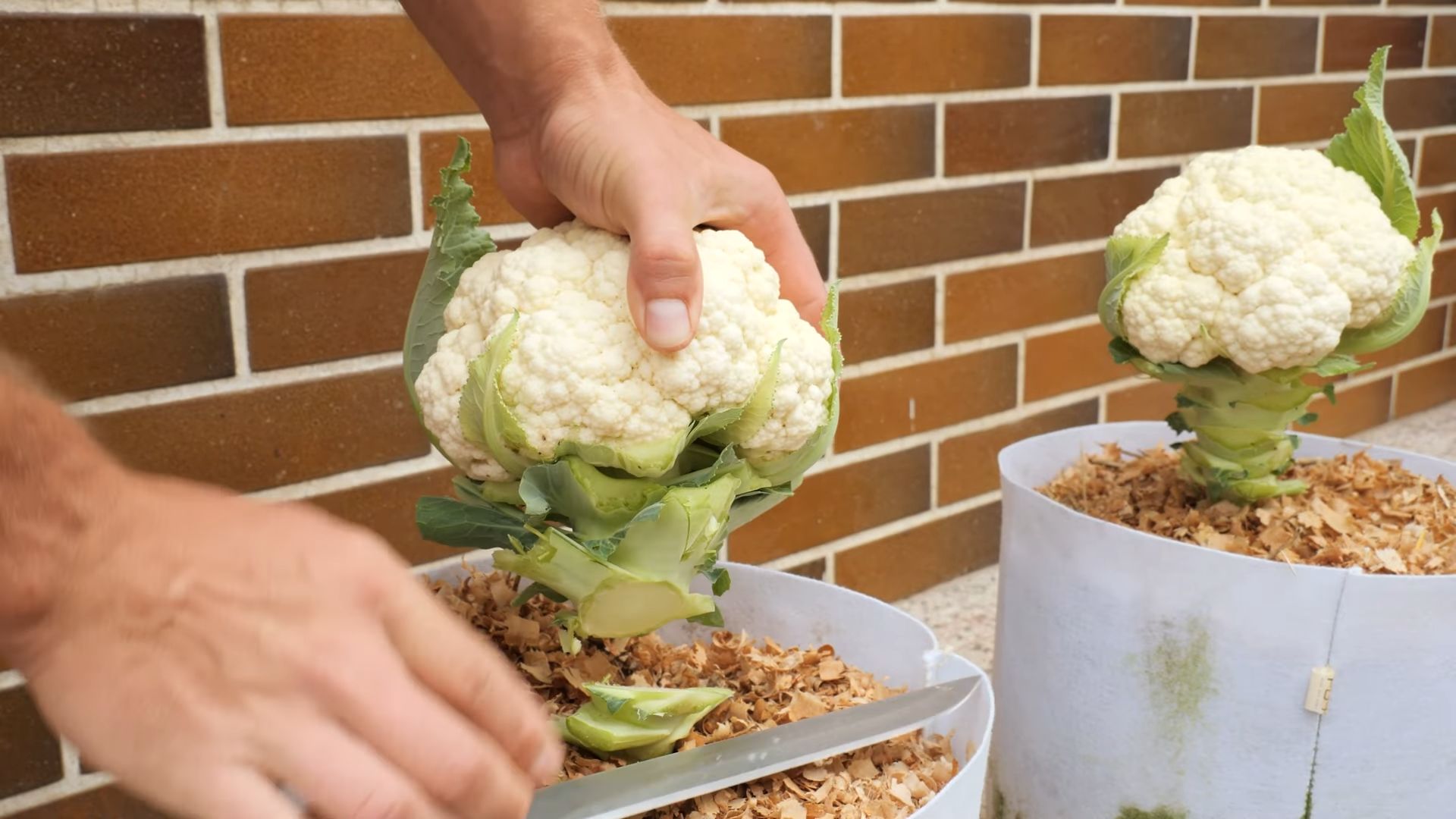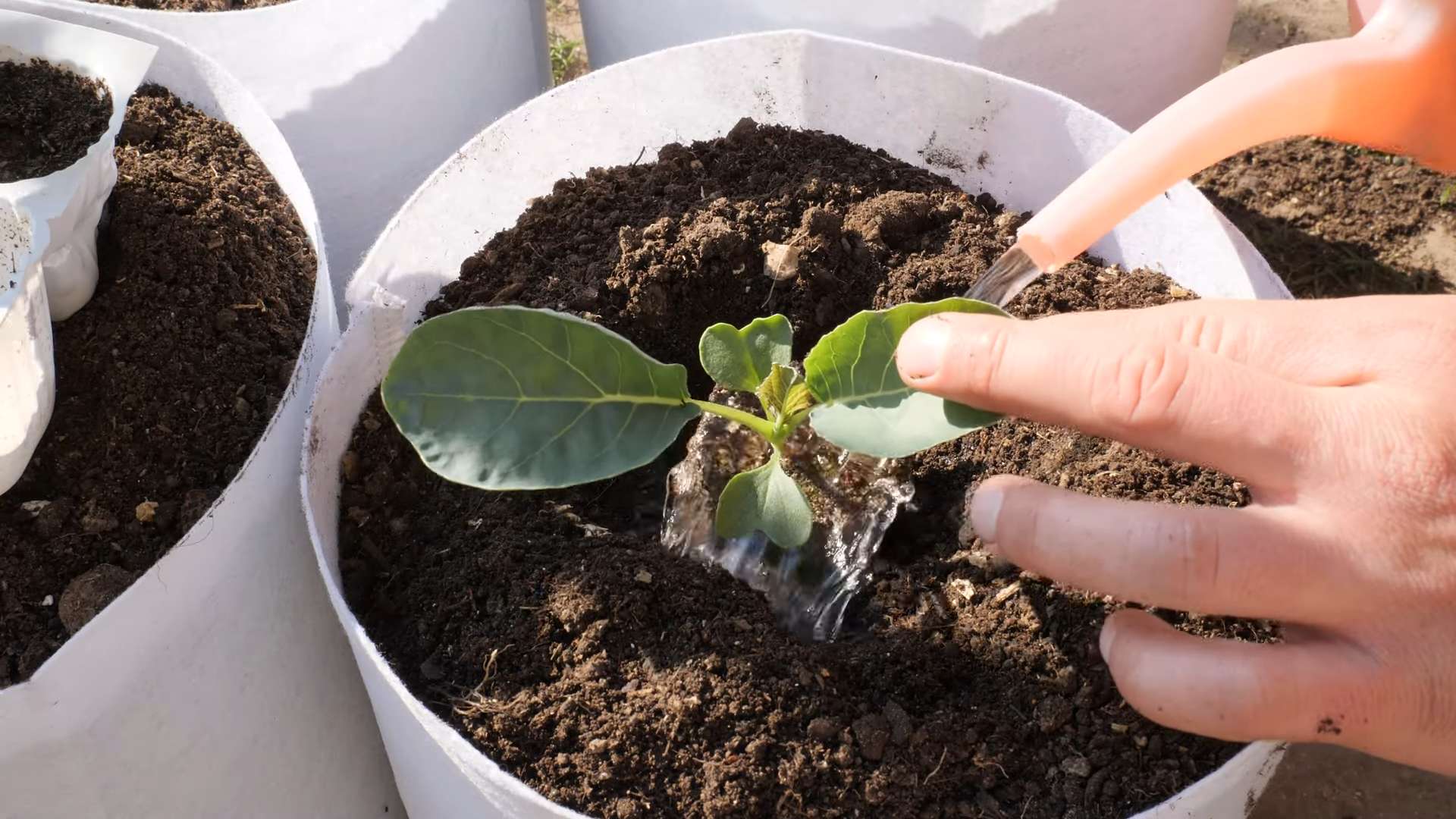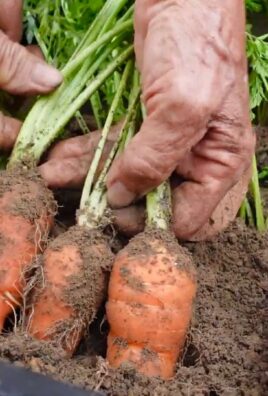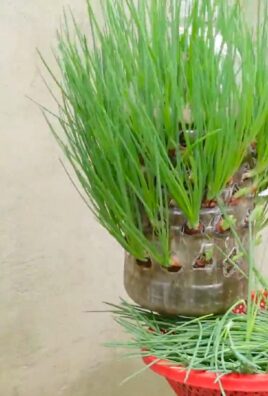Harvesting Cauliflower from your own garden is one of the most rewarding experiences a home gardener can have! Imagine the satisfaction of nurturing a tiny seed into a beautiful, creamy white head, ready to be transformed into a delicious and healthy meal. But knowing *when* and *how* to harvest your cauliflower is crucial to enjoying its peak flavor and texture.
For centuries, cauliflower has been a staple in gardens and kitchens worldwide. Originating in the Mediterranean, this versatile vegetable has been cultivated and enjoyed for its unique flavor and nutritional benefits. From ancient Roman banquets to modern-day stir-fries, cauliflower has proven its staying power.
I know, I know, sometimes it feels like you’re playing a guessing game with your cauliflower. You’ve put in the time and effort, and the last thing you want is to harvest it too early (resulting in a small, underdeveloped head) or too late (leading to a bitter, grainy texture). That’s where these simple, yet effective, DIY tricks come in! This guide will equip you with the knowledge and confidence to master the art of harvesting cauliflower at its prime, ensuring you get the most out of your homegrown bounty. Let’s dive in and unlock the secrets to a perfect cauliflower harvest!

Harvesting Cauliflower Like a Pro: A DIY Guide
Okay, so you’ve nurtured your cauliflower plant from a tiny seedling to a beautiful, leafy green specimen. Now comes the exciting part: harvesting! But how do you know when it’s ready? And how do you cut it without ruining the whole thing? Don’t worry, I’m here to guide you through the process. Harvesting cauliflower is easier than you think, and with a few simple steps, you’ll be enjoying fresh, homegrown cauliflower in no time.
Knowing When to Harvest: The Cauliflower Readiness Checklist
Before you even think about grabbing your knife, you need to make sure your cauliflower is actually ready. Here’s what to look for:
* Head Size: This is the most obvious indicator. Most cauliflower varieties are ready to harvest when the head reaches 6-8 inches in diameter. However, check your seed packet or plant tag for the specific size expected for your variety. Some are smaller, some are larger!
* Head Compactness: The florets should be tightly packed together, forming a dense, firm head. If the florets are starting to separate or the head feels loose, it’s likely overripe.
* Color: Most cauliflower varieties are white, but you might be growing purple, orange, or green varieties. Whatever the color, it should be even and vibrant. Discoloration or yellowing can indicate that the cauliflower is past its prime.
* Texture: The surface of the head should be smooth and free of blemishes. Small, fuzzy spots can indicate insect damage or disease.
* Time Since Planting: As a general guideline, cauliflower is usually ready to harvest 50-100 days after planting, depending on the variety and growing conditions. Keep track of your planting date to get a rough estimate.
Tools You’ll Need
Gathering your tools beforehand will make the harvesting process smooth and efficient. Here’s what I recommend:
* Sharp Knife: A sharp knife is essential for making a clean cut. A chef’s knife or a serrated knife works well.
* Gloves (Optional): If you have sensitive skin or just want to keep your hands clean, gloves are a good idea.
* Basket or Bag: You’ll need something to carry your harvested cauliflower.
* Water Hose (Optional): For rinsing off any dirt or debris.
The Harvesting Process: Step-by-Step
Now for the main event! Follow these steps to harvest your cauliflower like a seasoned gardener:
1. Inspect the Cauliflower: Before you start cutting, give your cauliflower one last check to make sure it meets all the readiness criteria. Look for the right size, compactness, color, and texture.
2. Prepare to Cut: Position yourself comfortably in front of the plant. You’ll want to have a clear view of the stem and the surrounding leaves.
3. Make the Cut: Using your sharp knife, cut the stem of the cauliflower about 2-3 inches below the head. Angle the knife slightly downwards to create a clean, angled cut. This will help prevent water from pooling on the cut stem and potentially causing rot.
4. Remove Excess Leaves: After you’ve cut the head, remove some of the larger, outer leaves surrounding the head. Leave a few of the smaller, inner leaves to protect the cauliflower during storage. These will also help keep the head fresher for longer.
5. Clean the Cauliflower (Optional): If your cauliflower is dirty, you can rinse it gently with a hose or in a sink. Be careful not to damage the delicate florets.
6. Store the Cauliflower: Place your harvested cauliflower in a basket or bag and take it inside.
Storing Your Harvest: Keeping Cauliflower Fresh
Proper storage is crucial for keeping your cauliflower fresh and delicious. Here’s how I do it:
* Refrigerate Immediately: Don’t leave your cauliflower sitting out at room temperature for too long. The sooner you refrigerate it, the longer it will last.
* Wrap it Up: Wrap the cauliflower head loosely in plastic wrap or place it in a perforated plastic bag. This will help prevent it from drying out.
* Store it Upside Down: Storing the cauliflower head upside down in the refrigerator can help prevent moisture from accumulating on the florets, which can lead to spoilage.
* Use Within a Week: Cauliflower is best used within 5-7 days of harvesting.
Troubleshooting: Common Cauliflower Harvesting Problems
Even with the best planning, things can sometimes go wrong. Here are some common problems you might encounter and how to deal with them:
* Cauliflower Head is Too Small: If your cauliflower head is smaller than expected, it could be due to a number of factors, such as poor soil, insufficient watering, or pest problems. Make sure your soil is rich in nutrients, water regularly, and protect your plants from pests. Sometimes, it just needs more time!
* Cauliflower Head is Loose or Separating: This usually indicates that the cauliflower is overripe. Harvest it immediately, even if it’s not quite as large as you’d like.
* Cauliflower Head is Yellowing: Yellowing can be caused by several factors, including sun exposure, nutrient deficiencies, or disease. If the yellowing is minor, you can still harvest the cauliflower and cut away the discolored parts. If the yellowing is severe, it’s best to discard the head. To prevent yellowing, make sure your cauliflower plants are getting enough nutrients and consider blanching the heads (see below).
* Cauliflower Head Has Blemishes or Spots: Small blemishes or spots can be caused by insect damage or disease. If the damage is minor, you can cut away the affected areas and still use the rest of the head. If the damage is extensive, it’s best to discard the head.
Blanching Cauliflower: Keeping it White
Blanching is a technique used to protect the cauliflower head from sun exposure and keep it white. Here’s how to do it:
1. When to Blanch: Start blanching your cauliflower when the head is about 2-3 inches in diameter.
2. How to Blanch: Gently pull the large, outer leaves of the plant over the head, covering it completely. Secure the leaves with twine, rubber bands, or clothespins.
3. Check Regularly: Check the cauliflower head regularly to make sure it’s still covered. Re-adjust the leaves as needed.
Enjoying Your Harvest: Cauliflower Recipe Ideas
Now that you’ve harvested your beautiful cauliflower, it’s time to enjoy it! Here are a few of my favorite cauliflower recipes:
* Roasted Cauliflower: Toss cauliflower florets with olive oil, salt, pepper, and your favorite spices, then roast in the oven until tender and slightly browned.
* Cauliflower Mash: Steam or boil cauliflower until tender, then mash with butter, milk, and seasonings for a healthy and delicious alternative to mashed potatoes.
* Cauliflower Rice: Pulse raw cauliflower florets in a food processor until they resemble rice. Use it as a low-carb substitute for rice in stir-fries, salads, or other dishes.
* Cauliflower Soup: Blend cooked cauliflower with broth, cream, and seasonings for a creamy and comforting soup.
* Cauliflower Pizza Crust: Combine riced cauliflower with cheese, eggs, and seasonings to create a gluten-free pizza crust.
Saving Seeds (Advanced): For the Truly Dedicated Gardener
If you’re feeling ambitious, you can even save seeds from your cauliflower plants to grow next year. However, this is a more advanced technique and requires some extra effort.
1. Choose the Best Plant: Select a healthy, vigorous plant with a desirable head shape and size.
2. Allow the Plant to Bolt: After harvesting the head, leave the plant in the ground and allow it to bolt (flower).
3. Collect the Seeds: Once the seed pods are dry and brown, collect them and extract the seeds.
4. Dry and Store the Seeds: Dry the seeds thoroughly and store them in a cool, dry place until next planting season.
Saving seeds from cauliflower can be tricky because cauliflower is a biennial plant, meaning it takes two years to complete its life cycle. You’ll need to overwinter the plant and allow it to flower in the second year to collect seeds. Also, cauliflower is cross-pollinated, so you’ll need to isolate your plants to prevent cross-pollination with other brassicas.
Final Thoughts
Harvesting cauliflower is a rewarding experience that allows you to enjoy the fruits (or rather, vegetables) of your labor. By following these simple steps, you can harvest your cauliflower at the peak of freshness and enjoy its delicious flavor in a variety of dishes. Happy gardening!

Conclusion
So, there you have it – a comprehensive guide to successfully harvesting cauliflower from your very own garden! This isn’t just about pulling a vegetable out of the ground; it’s about understanding the plant’s life cycle, recognizing the signs of perfect ripeness, and ensuring you get the most delicious and nutritious cauliflower possible. Mastering this DIY trick is a game-changer for any home gardener, allowing you to enjoy the freshest produce imaginable and significantly reduce your grocery bills.
Why is this a must-try? Because store-bought cauliflower simply can’t compare to the flavor and texture of a freshly harvested head. The subtle sweetness and crispness are unparalleled. Plus, you have complete control over the growing process, ensuring your cauliflower is free from unwanted pesticides and chemicals. You’re also contributing to a more sustainable lifestyle by reducing your reliance on commercially grown produce and minimizing your carbon footprint.
But the benefits don’t stop there. Harvesting your own cauliflower allows you to experiment with different varieties. Have you ever tried purple, orange, or Romanesco cauliflower? Growing your own opens up a world of culinary possibilities. Consider planting different varieties with varying maturity dates to extend your harvest season. You could also try succession planting, sowing new seeds every few weeks to ensure a continuous supply of fresh cauliflower throughout the growing season.
Beyond the standard steamed or roasted cauliflower, think about grating it into rice substitutes, adding it to soups and stews, or even grilling it for a smoky flavor. The possibilities are endless! And don’t forget about the leaves! Cauliflower leaves are perfectly edible and can be used in salads, stir-fries, or even made into chips. Nothing goes to waste when you harvest your own cauliflower.
We encourage you to embrace this DIY trick and experience the joy of harvesting your own cauliflower. It’s a rewarding and fulfilling experience that will connect you with nature and provide you with delicious, healthy food. Don’t be intimidated if you’re a beginner; with a little patience and attention, you’ll be harvesting beautiful heads of cauliflower in no time.
And remember, the key to successful cauliflower harvesting lies in observation. Regularly check your plants for signs of maturity, and don’t be afraid to experiment. Every garden is different, and what works for one person may not work for another. The most important thing is to learn from your experiences and adapt your techniques accordingly.
So, get out there, get your hands dirty, and start growing your own cauliflower today! We’re confident that you’ll be amazed by the results. And once you’ve harvested your first head, be sure to share your experience with us! We’d love to hear your tips, tricks, and favorite cauliflower recipes. Share your photos and stories on social media using [Your Hashtag Here] and let’s inspire others to embrace the joy of home gardening. Happy harvesting!
Frequently Asked Questions (FAQ)
Q: How do I know when my cauliflower is ready to harvest?
A: This is the most crucial question! The ideal time to harvest cauliflower is when the head is firm, compact, and has reached its desired size. Typically, this is when the head is about 6-8 inches in diameter, but this can vary depending on the variety. Look for tightly packed florets. If the florets start to separate or the head becomes loose, it’s likely overripe. Also, check the color; it should be uniformly white (or the color specific to the variety you’re growing). Yellowing or discoloration can indicate that the cauliflower is past its prime.
Q: What tools do I need to harvest cauliflower?
A: You’ll need a sharp knife or pruning shears. A clean, sharp blade is essential to make a clean cut and prevent damage to the plant. You might also want to wear gloves to protect your hands from dirt and potential irritants. A basket or container to collect the harvested heads is also helpful.
Q: How do I actually harvest the cauliflower head?
A: Using your sharp knife or pruning shears, cut the stem of the cauliflower head, leaving a few leaves (about 4-6 inches) attached to protect the head. Make the cut at an angle to allow water to run off and prevent rot. Handle the head carefully to avoid bruising or damaging the florets.
Q: Can I harvest cauliflower in stages, or do I have to harvest the entire head at once?
A: You need to harvest the entire head at once. Unlike some vegetables that can be harvested gradually, cauliflower heads are best harvested when they are fully mature. Once you cut the main head, the plant will not produce another large head. However, some varieties may produce smaller side shoots after the main head is harvested, which can be harvested later.
Q: What if my cauliflower head is starting to turn yellow?
A: Yellowing indicates that the cauliflower is starting to overmature. If it’s only slightly yellow, you can still harvest it and eat it, but the flavor may be slightly stronger and less sweet. If it’s significantly yellow, it’s best to harvest it immediately and cook it right away. You can try blanching it briefly before cooking to help retain its color. To prevent yellowing in the future, ensure your cauliflower receives adequate water and nutrients, and consider tying the outer leaves around the head to protect it from the sun (a process called blanching).
Q: How do I store harvested cauliflower?
A: To store harvested cauliflower, remove any excess leaves and wrap the head loosely in plastic wrap. Store it in the refrigerator crisper drawer. It should last for about a week. Avoid washing the cauliflower before storing it, as moisture can promote spoilage. Wash it just before you’re ready to use it.
Q: My cauliflower head is very small. What could be the reason?
A: Several factors can contribute to small cauliflower heads. Insufficient sunlight, inadequate watering, poor soil fertility, and pest infestations are common culprits. Ensure your cauliflower plants receive at least 6 hours of direct sunlight per day. Water them regularly, especially during dry periods. Amend the soil with compost or other organic matter to improve its fertility. And monitor your plants for pests and diseases, taking appropriate action if necessary.
Q: Can I eat the leaves of the cauliflower plant?
A: Absolutely! Cauliflower leaves are perfectly edible and nutritious. They have a slightly stronger flavor than the florets but can be used in a variety of dishes. You can add them to salads, stir-fries, soups, and stews. They can also be roasted or sautéed as a side dish. Just be sure to wash them thoroughly before using them.
Q: What are some common pests and diseases that affect cauliflower?
A: Common pests that affect cauliflower include cabbage worms, aphids, and flea beetles. Diseases include clubroot, black rot, and downy mildew. Regularly inspect your plants for signs of pests and diseases, and take appropriate action if necessary. Organic pest control methods, such as using insecticidal soap or neem oil, can be effective. Crop rotation and good sanitation practices can help prevent diseases.
Q: How can I prevent my cauliflower from bolting (going to seed)?
A: Bolting is often caused by stress, such as extreme temperatures or inconsistent watering. To prevent bolting, choose cauliflower varieties that are well-suited to your climate. Plant them at the appropriate time of year to avoid temperature extremes. Water them regularly and consistently, and provide them with adequate nutrients. Mulching around the plants can help retain moisture and regulate soil temperature.




Leave a Comment